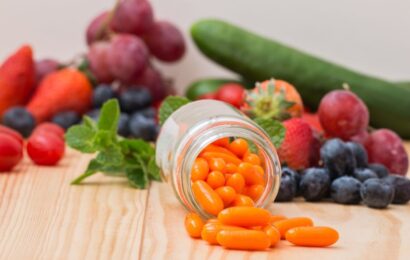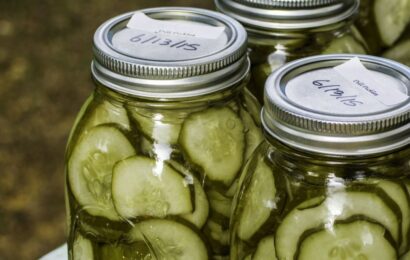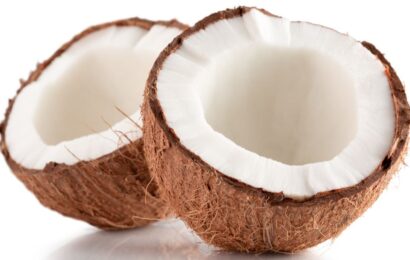If you’ve ever heard about or seen nutritional yeast listed on a food package, you might be wondering what this is — is this yeast used to make bread or beer, perhaps? Why is it added to food? And does it have any nutritional benefits? Read on to find out!
What is yeast and how is it used?
If you’re a bread baker, you probably have some packets or a jar of yeast sitting in your fridge. You might have never given it a second thought, other than hoping it’s still active so that your breads or rolls rise properly. Yeast is a single-cell organism that belongs to the fungus kingdom. There are more than 1500 species of yeast, and they predate humans by millions of years.
Yeast works by feeding on sugar, and then converting that into carbon dioxide and alcohol. When it comes to baking, cooking, brewing, and eating, there are different kinds of yeast. Baker’s yeast, or Saccharomyces cerevisiae (which means “sugar fungus”), to be exact, is available in several forms, according to the website The Spruce Eats:
- Active dry
- Fresh or cake
- Liquid
- Instant
Baker’s yeast helps the product (breads, rolls, etc.) rise and provides a soft, airy structure.
Brewer’s yeast, as the name suggests, is used in beer brewing. It may contain different types of Saccharomyces species, and it’s collected during the process of beer brewing, although it can also be grown in a nutrient broth. This type of yeast is also used as a nutrient supplement, since it contains protein, B vitamins, and minerals such as chromium and selenium. Some people may take brewer’s yeast to help treat certain conditions, including:
- High cholesterol
- Gout
- Eczema
- Diabetes
- Diarrhea
However, there isn’t a lot of research to back up these claims, and brewer’s yeast can cause some side effects, such as gassiness, stomach upset, and headaches.
What is nutritional yeast?
The other form of yeast that people consume is nutritional yeast. It’s also derived from the species Saccharomyces cerevisiae, but unlike baker’s and brewer’s yeasts, nutritional yeast is made from deactivated yeast that has been heated and dried. The yeast is first cultured in a nutrient medium (often sugar cane or beet molasses) for several days. Then, it’s deactivated with heat, harvested, washed, dried, and packaged. The end product looks like yellow flakes (somewhat similar to fish food!), but it may also be in the form of granules or powder, as well.
Nutritional yeast, often called “nooch” among fans, is not interchangeable with baker’s or brewer’s yeast. Instead, people, especially those following a vegan eating pattern, use nutritional yeast as a cheese substitute for shaking onto popcorn, pizza, pasta, and salads, and even adding it to casseroles, soup, chili, and dips. Basically, nutritional yeast can be used the same way you would use grated cheese. It has a cheesy, “umami” flavor, and it’s dairy, soy, and gluten free.
To get cutting-edge diabetes news, strategies for blood glucose management, nutrition tips, healthy recipes, and more delivered straight to your inbox, sign up for our free newsletters!
What are the benefits of nutritional yeast?
Besides serving as a cheese substitute, nutritional yeast is often consumed for its nutrient properties. Specifically, nutritional yeast contains:
- Protein
- Fiber, including beta glucan
- B vitamins, especially vitamin B12
- Potassium
- Zinc
- Chromium
- Antioxidants
Some of the health benefits of nutritional yeast include:
- It serves as vegan protein source, as it contains all nine essential amino acids. Protein is needed to maintain muscle mass, repair cells and tissues, and make hormones and enzymes.
- It’s a vegan source of vitamin B12, which is needed to maintain the health of the nervous system. People who have diabetes and who take metformin may have low levels of vitamin B12, and as a result, may develop symptoms such as numbness and tingling in the hands and feet, which are also symptoms of diabetic peripheral neuropathy.
- It may help reduce cholesterol levels. Nutritional yeast contains a fiber called beta glucan (also found in oatmeal) which is a type of soluble fiber that helps lower blood cholesterol levels.
- It may support the immune system, thanks to its beta glucan and antioxidant content. Some research indicates that this type of yeast can reduce inflammation from bacterial infections. Other research points to nutritional yeast as helping to reduce the severity of respiratory illnesses, such as a cold or the flu in both children and adults.
- It may prevent skin, nail, and hair problems, such as acne and brittle nails.
- It may help with managing blood sugars, since it contains both beta glucan and chromium, although more research is needed to support this.
What is the nutrient content of nutritional yeast?
According to the USDA, a 16-gram serving of nutritional yeast, or 1 1/2 tablespoons, contains:
- 60 calories
- 5 grams (g) of carbohydrate
- 0 g of sugar
- 3 g of fiber
- 8 g of protein
- 0.5 g of fat
- 30 milligrams (mg) of sodium
- 24 micrograms (mcg) of vitamin B12
- 12 mg of vitamin B6
- 10 mg of riboflavin
- 10 mg of thiamin
Some brands of nutritional yeast are fortified with additional minerals, such as iron. Check the label for the nutrition content.
Is nutritional yeast safe to use?
In general, nutritional yeast is safe to consume. Eating it will not cause a yeast infection, for example. However, some people may want to limit or avoid using this product, as it may not be suitable for people with the following conditions:
- Migraines
- Inflammatory bowel disease, such as Crohn’s disease
- Glaucoma
- Sensitivity to yeast products
Nutritional yeast may also interact with some medicines, such as monoamine oxidase inhibitors, some narcotics, and antifungal drugs.
Check with your health care provider if you have any of the above conditions or take the above types of medicines before using nutritional yeast.
How can you use nutritional yeast?
If you’re curious about nutritional yeast, give it a try! Here are some tips to get you started:
- Sprinkle it on freshly popped popcorn.
- Sprinkle it on roasted vegetables or a baked potato.
- Try it on scrambled eggs.
- Use it as a topping for soups and salads.
- Use it in place of parmesan cheese.
Want to learn more about eating well? Read “Strategies for Healthy Eating,” “Improving Your Recipes: One Step at a Time,” and “Easy Ways to Eat Better.”





